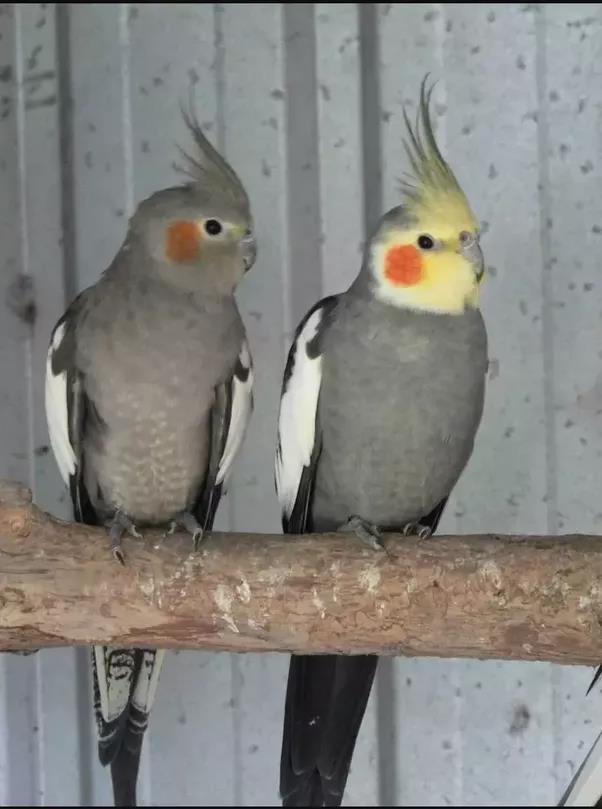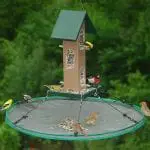Birds can be some of the most difficult animals to sex because of how they tend to have the same appearance depending on the species and how they do not have any visible genitals that can indicate whether they are male or female. There are a lot of ways that people use to determine the sex of a bird, but it usually depends on the species. Of course, a Cockatiel is no different in terms of how difficult it is to sex, but there are some ways that can be used to determine whether it is male or female.
But before we get there, let us first get to know more about our feathery friend known as the Cockatiel.
What is a Cockatiel?
· Physical description
The Cockatiel is one of the most well-loved species of birds because of its amazingly beautiful appearance. This bird has an unmistakable look that is quite unique to its species and is arguably what makes it one of the most sought-after pet birds on the exotic pet trade. It actually is a cockatoo that has unusual features that allow it to stay as unique as a bird as it is.
In terms of its size, the Cockatiel tends to be quite small compared to other species of cockatoos. It sports a body that is quite slender. This bird even has a pointed tail that will make it look more like a parrot than a species of cockatoo. The usual Cockatiel has a body that is mostly gray in color but tends to be pale as you go down towards its tail. Meanwhile, its wing usually has a white patch near the edge. This bird also has orange cheeks that give it its cuddly look. But what really gives the Cockatiel its distinctive look is the pointed crest at the top of its head.
· Habitat
The Cockatiel is a bird that is native to Australia and can be found all over the entire continent but are less common in regions close to Tasmania. These birds are often seen flying together in flocks as they are social birds that prefer to live in small groups. They most likely prefer to stay near the countryside or in places that are close to a standing body of water. The Cockatiel is more commonly seen in the northern parts of Australia and in inland areas that are quite arid in terms of their climate.
· Feeding
Cockatiels are birds that are able to enjoy a wide range of food types because of their nature as omnivores. However, these birds prefer to follow a diet that is closer to that of being herbivores, although there is a chance that they will occasionally snack on invertebrates that are small enough for them to eat. Nevertheless, it has been observed that the Cockatiel prefers to eat fruits, vegetables, and grains of different types and varieties.
If you have a pet, Cockatiel, you should choose seeds and pellets as the go-to food for your bird. These types of foods already contain a majority of what the Cockatiel needs on a regular basis as far as nutrition is concerned. Always make sure to keep the bird’s dish about three-quarters full on a daily basis and keep an eye on how often it eats its food.
Since seeds and pellets are not complete when it comes to vitamins and minerals, it is imperative that you supplement your Cockatiel’s diet with fruits and vegetables. When you are looking for fruits that are safe and healthy for this bird to eat, apples and bananas can be good choices. However, see to it that such fruits should only be treats that are given once a week or if you are training the Cockatiel. Meanwhile, if you want to complete its diet with vegetables, you should go for dark leafy greens once every two days.
· Personality and behavior
A unique trait that you probably can only find in Cockatiels is that you can tell their mood just by looking at the crest at the top of their heads. As much as possible, you should look at the bird’s crest to know what it is feeling or what its mood is. If the crest is pointed straight up, it means that the Cockatiel is startled or in a mood to be curious about its surroundings and its immediate environment. However, if the feathers on the crest are flattened close to its head, that means that the Cockatiel is on the defensive and will try to defend itself from anything it deems as a threat to its survival. This can also indicate that the bird is under a stressful situation, especially if it starts hissing. Finally, when the feathers on the crest are held back, and when you see that the Cockatiel’s cheeks are fluffed, it means that the bird is feeling calm and relaxed.
In general, a Cockatiel is similar to a cockatoo in terms of its overall personality and temperament. They tend to be quite friendly and are fond of bonding with their human owners. Cockatiels are also similar to parrots in the sense that they may try to mimic sounds and noises that they hear. These birds are also highly curious and inquisitive to the point that they will try to do any sort of activity that could provide physical and mental stimulation. As such, always see to it that they have toys to play with so that they won’t get bored easily.
How to sex a Cockatiel

Just like any other bird, it can be quite tricky to sex a Cockatiel because of how they almost look identical to one another regardless of the sex. However, these birds do have certain attributes that you can use to tell apart the males from the females. You can even go on to say that such attributes are unique to the Cockatiel.
· Young Cockatiels
When the Cockatiels are young, they look almost identical, especially when they are about six to nine months old. It is almost impossible to tell apart the males from the females at this age, but there are still indications you can use to sex them. These birds will molt for the first time at this age and will show physical traits that are unique to either males or females. For example, there usually tends to be more variation between the male and the female at this age but it still is hard to tell them apart.
· Adulthood

Once the Cockatiels have reached adulthood, it is now easier for you to tell them apart from one another. The normal gray type Cockatiel female will have tail feathers with markings under them. Such markings are horizontal stripes that alternate between light and dark colors. Meanwhile, if you compare the faces of the adult gray Cockatiel, you can easily tell the male from the female because the former tend to have features that are more striking compared to the latter. The male tends to have yellow colors that are brighter and more pronounced compared to the female. There are even cases when only the male develops a yellow face during adulthood as some females retain grayish facial features.
You can also inspect the Cockatiel’s body to tell them apart. Males have a plumage that has a darker shade of gray compared to the female that has a lighter shade. However, you cannot always rely on this method as it is not as reliable as checking the Cockatiel’s face when sexing it. If all else fails, taking the Cockatiel to a veterinarian might be the best option for you if you want to sex it. After all, they are experts in telling birds apart and can do blood tests that can conclusively sex your Cockatiel.



